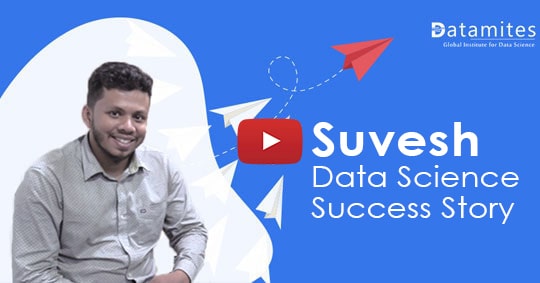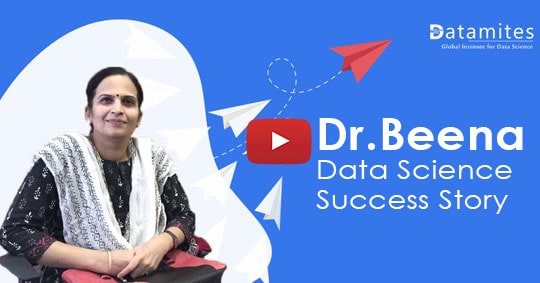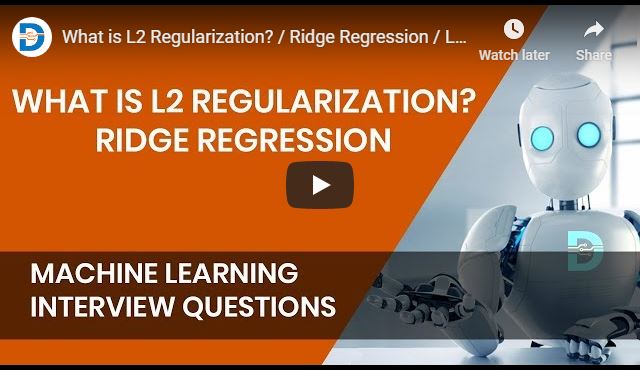
Instructor Led Live Online
Self Learning + Live Mentoring
Customize Your Training
The entire training includes real-world projects and highly valuable case studies.
IABAC® certification provides global recognition of the relevant skills, thereby opening opportunities across the world.
MODULE 1: DATA ANALYSIS FOUNDATION
• Data Analysis Introduction
• Data Preparation for Analysis
• Common Data Problems
• Various Tools for Data Analysis
• Evolution of Analytics domain
MODULE 2: CLASSIFICATION OF ANALYTICS
• Four types of the Analytics
• Descriptive Analytics
• Diagnostics Analytics
• Predictive Analytics
• Prescriptive Analytics
• Human Input in Various type of Analytics
MODULE 3: CRIP-DM Model
• Introduction to CRIP-DM Model
• Business Understanding
• Data Understanding
• Data Preparation
• Modeling, Evaluation, Deploying,Monitoring
MODULE 4: UNIVARIATE DATA ANALYSIS
• Summary statistics -Determines the value’s center and spread.
• Measure of Central Tendencies: Mean, Median and Mode
• Measures of Variability: Range, Interquartile range, Variance and Standard Deviation
• Frequency table -This shows how frequently various values occur.
• Charts -A visual representation of the distribution of values.
MODULE 5: DATA ANALYSIS WITH VISUAL CHARTS
• Line Chart
• Column/Bar Chart
• Waterfall Chart
• Tree Map Chart
• Box Plot
MODULE 6: BI-VARIATE DATA ANALYSIS
• Scatter Plots
• Regression Analysis
• Correlation Coefficients
MODULE 1: PYTHON BASICS
• Introduction of python
• Installation of Python and IDE
• Python Variables
• Python basic data types
• Number & Booleans, strings
• Arithmetic Operators
• Comparison Operators
• Assignment Operators
MODULE 2: PYTHON CONTROL STATEMENTS
• IF Conditional statement
• IF-ELSE
• NESTED IF
• Python Loops basics
• WHILE Statement
• FOR statements
• BREAK and CONTINUE statements
MODULE 3: PYTHON DATA STRUCTURES
• Basic data structure in python
• Basics of List
• List: Object, methods
• Tuple: Object, methods
• Sets: Object, methods
• Dictionary: Object, methods
MODULE 4: PYTHON FUNCTIONS
• Functions basics
• Function Parameter passing
• Lambda functions
• Map, reduce, filter functions
MODULE 1 : OVERVIEW OF STATISTICS
MODULE 2 : HARNESSING DATA
MODULE 3 : EXPLORATORY DATA ANALYSIS
MODULE 4 : HYPOTHESIS TESTING
MODULE 1: COMPARISION AND CORRELATION ANALYSIS
• Data comparison Introduction,
• Performing Comparison Analysis on Data
• Concept of Correlation
• Calculating Correlation with Excel
• Comparison vs Correlation
• Hands-on case study : Comparison Analysis
• Hands-on case study Correlation Analysis
MODULE 2: VARIANCE AND FREQUENCY ANALYSIS
• Variance Analysis Introduction
• Data Preparation for Variance Analysis
• Performing Variance and Frequency Analysis
• Business use cases for Variance Analysis
• Business use cases for Frequency Analysis
MODULE 3: RANKING ANALYSIS
• Introduction to Ranking Analysis
• Data Preparation for Ranking Analysis
• Performing Ranking Analysis with Excel
• Insights for Ranking Analysis
• Hands-on Case Study: Ranking Analysis
MODULE 4: BREAK EVEN ANALYSIS
• Concept of Breakeven Analysis
• Make or Buy Decision with Break Even
• Preparing Data for Breakeven Analysis
• Hands-on Case Study: Manufacturing
MODULE 5: PARETO (80/20 RULE) ANALSYSIS
• Pareto rule Introduction
• Preparation Data for Pareto Analysis,
• Performing Pareto Analysis on Data
• Insights on Optimizing Operations with Pareto Analysis
• Hands-on case study: Pareto Analysis
MODULE 6: Time Series and Trend Analysis
• Introduction to Time Series Data
• Preparing data for Time Series Analysis
• Types of Trends
• Trend Analysis of the Data with Excel
• Insights from Trend Analysis
MODULE 7: DATA ANALYSIS BUSINESS REPORTING
• Management Information System Introduction
• Various Data Reporting formats
• Creating Data Analysis reports as per the requirements
MODULE 1: DATA ANALYTICS FOUNDATION
• Business Analytics Overview
• Application of Business Analytics
• Benefits of Business Analytics
• Challenges
• Data Sources
• Data Reliability and Validity
MODULE 2: OPTIMIZATION MODELS
• Predictive Analytics with Low Uncertainty;Case Study
• Mathematical Modeling and Decision Modeling
• Product Pricing with Prescriptive Modeling
• Assignment 1 : KERC Inc, Optimum Manufacturing Quantity
MODULE 3: PREDICTIVE ANALYTICS WITH REGRESSION
• Mathematics behind Linear Regression
• Case Study : Sales Promotion Decision with Regression Analysis
• Hands on Regression Modeling in Excel
MODULE 4: DECISION MODELING
• Predictive Analytics with High Uncertainty
• Case Study-Monte Carlo Simulation
• Comparing Decisions in Uncertain Settings
• Trees for Decision Modeling
• Case Study : Supplier Decision Modeling - Kickathlon Sports Retailer
MODULE 1: MACHINE LEARNING INTRODUCTION
• What Is ML? ML Vs AI
• ML Workflow, Popular ML Algorithms
• Clustering, Classification And Regression
• Supervised Vs Unsupervised
MODULE 2: ML ALGO: LINEAR REGRESSSION
• Introduction to Linear Regression
• How it works: Regression and Best Fit Line
• Hands-on Linear Regression with ML Tool
MODULE 3: ML ALGO: LOGISTIC REGRESSION
• Introduction to Logistic Regression;
• Classification & Sigmoid Curve
• Hands-on Logistics Regression with ML Tool
MODULE 4: ML ALGO: KNN
• Introduction to KNN; Nearest Neighbor
• Regression with KNN
• Hands-on: KNN with ML Tool
MODULE 5: ML ALGO: K MEANS CLUSTERING
• Understanding Clustering (Unsupervised)
• Introduction to KMeans and How it works
• Hands-on: K Means Clustering
MODULE 6: ML ALGO: DECISION TREE
• Decision Tree and How it works
• Hands-on: Decision Tree with ML Tool
MODULE 7: ML ALGO: SUPPORT VECTOR MACHINE (SVM)
• Introduction to SVM
• How It Works: SVM Concept, Kernel Trick
• Hands-on: SVM with ML Tool
MODULE 8: ARTIFICIAL NEURAL NETWORK (ANN)
• Introduction to ANN, How It Works
• Back propagation, Gradient Descent
• Hands-on: ANN with ML Tool
MODULE 1: DATABASE INTRODUCTION
• DATABASE Overview
• Key concepts of database management
• CRUD Operations
• Relational Database Management System
• RDBMS vs No-SQL (Document DB)
MODULE 2: SQL BASICS
• Introduction to Databases
• Introduction to SQL
• SQL Commands
• MY SQL workbench installation
MODULE 3: DATA TYPES AND CONSTRAINTS
• Numeric, Character, date time data type
• Primary key, Foreign key, Not null
• Unique, Check, default, Auto increment
MODULE 4: DATABASES AND TABLES (MySQL)
• Create database
• Delete database
• Show and use databases
• Create table, Rename table
• Delete table, Delete table records
• Create new table from existing data types
• Insert into, Update records
• Alter table
MODULE 5: SQL JOINS
• Inner join, Outer Join
• Left join, Right Join
• Self Join, Cross join
• Windows Functions: Over, Partition, Rank
MODULE 6: SQL COMMANDS AND CLAUSES
• Select, Select distinct
• Aliases, Where clause
• Relational operators, Logical
• Between, Order by, In
• Like, Limit, null/not null, group by
• Having, Sub queries
MODULE 7: DOCUMENT DB/NO-SQL DB
• Introduction of Document DB
• Document DB vs SQL DB
• Popular Document DBs
• MongoDB basics
• Data format and Key methods
• MongoDB data management
MODULE 1: BIG DATA INTRODUCTION
• Big Data Overview
• Five Vs of Big Data
• What is Big Data and Hadoop
• Introduction to Hadoop
• Components of Hadoop Ecosystem
• Big Data Analytics Introduction
MODULE 2: HDFS AND MAP REDUCE
• HDFS – Big Data Storage
• Distributed Processing with Map Reduce
• Mapping and reducing stages concepts
• Key Terms: Output Format, Partitioners, Combiners, Shuffle, and Sort
MODULE 3: PYSPARK FOUNDATION
• PySpark Introduction
• Spark Configuration
• Resilient distributed datasets (RDD)
• Working with RDDs in PySpark
• Aggregating Data with Pair RDDs
MODULE 4: SPARK SQL and HADOOP HIVE
• Introducing Spark SQL
• Spark SQL vs Hadoop Hive
MODULE 1: TABLEAU FUNDAMENTALS
• Introduction to Business Intelligence & Introduction to Tableau
• Interface Tour, Data visualization: Pie chart, Column chart, Bar chart.
• Bar chart, Tree Map, Line Chart
• Area chart, Combination Charts, Map
• Dashboards creation, Quick Filters
• Create Table Calculations
• Create Calculated Fields
• Create Custom Hierarchies
MODULE 2: POWER-BI BASICS
• Power BI Introduction
• Basics Visualizations
• Dashboard Creation
• Basic Data Cleaning
• Basic DAX FUNCTION
MODULE 3: DATA TRANSFORMATION TECHNIQUES
• Exploring Query Editor
• Data Cleansing and Manipulation:
• Creating Our Initial Project File
• Connecting to Our Data Source
• Editing Rows
• Changing Data Types
• Replacing Values
MODULE 4: CONNECTING TO VARIOUS DATA SOURCES
• Connecting to a CSV File
• Connecting to a Webpage
• Extracting Characters
• Splitting and Merging Columns
• Creating Conditional Columns
• Creating Columns from Examples
• Create Data Model
Career options include Data Analyst, Business Analyst, Data Scientist, BI Analyst, Market Research Analyst, and Data Engineer. These roles span industries like IT, finance, healthcare, retail, and e-commerce, with strong demand for data-driven decision making.
A Data Analytics course equips you with skills to analyze, interpret, and visualize data to drive business decisions. It opens high-demand career paths, enhances problem-solving skills, and provides hands-on experience with tools and real-world projects for job readiness.
The duration typically ranges from 3 to 6 months depending on the institute and course intensity. Some offer accelerated bootcamps of 1-2 months, while detailed programs with internships may last up to 6 months for in-depth learning.
The cost of Data Analytics courses varies based on the course level and institution. Basic courses typically range from ₹10,000 to ₹2,00,000, while advanced programs can cost between $500 to $2,500. These figures are approximate and can differ depending on the provider and location.
Look for institutes with comprehensive curriculum, expert trainers, real-world projects, certification, positive reviews, and placement support. Industry connections and internship opportunities also indicate quality and practical training.
As per a report by SNS Insider via GlobeNewswire, the global data analytics market was valued at USD 52.68 billion in 2023 and is expected to grow at a CAGR of 28.0%, reaching USD 483.41 billion by 2032 during the forecast period of 2024–2032. Sectors like finance, healthcare, retail, and IT are actively hiring data analysts, making analytics skills highly sought after in today’s job market.
Globally, Data Analysts varies based on experience, location, and industry. Entry-level roles start lower, while experienced analysts in tech hubs earn significantly more. According to Glassdoor,
No, a strong math or CS background is helpful but not mandatory. Many courses start from basics, making it accessible for beginners. Analytical thinking and eagerness to learn tools like Excel, SQL, and Python matter most.
Popular data analyst tools include Excel, SQL, Python, R, Tableau, Power BI, SAS, and Google Analytics. These help in data extraction, cleaning, analysis, visualization, and reporting to support decision-making.
The four types of data analytics are:
Typically, basic computer knowledge and analytical mindset suffice. Some familiarity with spreadsheets or programming helps but is not essential. Beginners-friendly courses often provide foundational training.
Data Analytics is the process of collecting, cleaning, analyzing, and interpreting data to uncover patterns, trends, and insights that aid in decision-making and strategic planning.
Data Analytics focuses on analyzing historical data to provide actionable insights. Data Science involves a broader scope including predictive modeling, machine learning, and advanced algorithms to create data-driven products.
According to Precedence Research, the Asia-Pacific data analytics market is projected to grow at a 23.5% CAGR from 2024 to 2034. Data Analytics skills align with increasing demand for data-driven business strategies. With digital transformation accelerating, companies seek professionals who can interpret data for competitive advantage.
Data Analysts apply their core skills across industries with tailored focuses: in finance, they handle risk assessment, fraud detection, and financial forecasting; in healthcare, they analyze patient data to improve care and predict health trends; in retail, they study customer behavior and sales to boost marketing and inventory; and in technology, they examine product usage and system performance to enhance products and operations.
Handling large, unstructured datasets and ensuring data accuracy while deriving meaningful insights is challenging. Balancing technical skills with business understanding is also crucial.
Its ability to analyze any data type—from sales, finance, marketing, to healthcare—makes it adaptable. The cross-industry application ensures relevance regardless of domain or sector.
Anyone with curiosity, analytical thinking, and basic computer skills can learn Data Analytics. The course is beginner-friendly and suitable for students, professionals, and career changers.
Both India and global markets show strong growth in data roles across IT, finance, healthcare, e-commerce, and consulting. Opportunities span startups to multinational corporations with attractive salaries.
Key skills include Excel, SQL, Python/R, data visualization (Tableau/Power BI), statistics, data cleaning, and basic knowledge of machine learning concepts. Strong communication skills are also vital.
Top IT companies hiring Data Analysts globally include Google, Amazon, Microsoft, IBM, Facebook, Deloitte, Accenture, and JPMorgan Chase. These firms seek skilled analysts to drive data-driven decisions across tech, finance, consulting, and retail sectors.
Current data analytics trends include growing demand for AI and machine learning skills, emphasis on soft skills like communication, rise of remote work, focus on data privacy, shift to skill-based hiring, and increasing use of cloud analytics for scalable, efficient data solutions.
Popular data analytics tools include Excel, Power BI, Tableau, SQL, Python libraries (Pandas, NumPy), R, SAS, Hadoop, and Spark. These tools help with data cleaning, visualization, statistical analysis, and big data processing, enhancing analytics capabilities.
Python is widely used in data analytics for data manipulation, visualization, and statistical modeling. Libraries like Pandas, NumPy, and Matplotlib enable efficient data processing, while machine learning libraries like Scikit-learn help build predictive models.
Data Analytics courses include projects like sales trend analysis, customer segmentation, financial forecasting, social media sentiment analysis, and dashboard creation. These practical projects build hands-on skills in real-world data handling and decision-making.
DataMites offers expert-led training, hands-on live projects, comprehensive curriculum, internship opportunities, and strong placement support. Its industry-focused approach ensures practical skills for a successful career in Data Analytics, making it a preferred institute.
Yes, DataMites provides internship opportunities with its Data Analytics course. These internships offer real-world experience, helping students apply their skills practically and gain confidence for job readiness in the competitive data analytics market.
Yes, DataMites offers flexible EMI options for the Data Analytics course. This allows students to pay fees in convenient installments, making it easier to invest in quality education without financial stress.
Yes, DataMites offers free demo classes for the Data Analytics course. This helps you understand the course structure, teaching style, and content before making your enrollment decision, ensuring confidence in your learning choice.
The Data Analytics course fee at DataMites ranges from ₹20,000 to ₹70,000, depending on the program type—online or offline—and the chosen payment plan. For accurate and up-to-date pricing, it is recommended to visit the official DataMites website or contact their support team directly.
Yes, DataMites provides placement assistance with its Data Analytics course. They connect students with reputed companies and support interview preparation, helping graduates secure jobs in data analytics and related fields.
DataMites offers a transparent refund policy. If you cancel within the initial days of enrollment, you are eligible for a partial refund. Detailed terms and conditions are available on their official website for full clarity.
DataMites provides extensive study materials including e-books, assignments, project work, and access to an online learning portal. These resources ensure comprehensive understanding and support throughout your Data Analytics learning journey.
DataMites instructors are industry experts with vast experience in Data Analytics. They bring practical knowledge and real-world insights to training, ensuring that students learn current industry standards and skills effectively.
Yes, the Data Analytics course at DataMites includes live projects. These projects provide hands-on experience with real-world datasets and scenarios, enhancing practical skills essential for career success.
The Data Analytics course duration at DataMites is typically 6 months. This timeframe covers foundational to advanced topics, ensuring a thorough understanding and job readiness in data analytics.
Yes, DataMites offers flexibility for missed classes. You can attend the missed sessions in another batch or access recorded classes to stay on track with your Data Analytics course without losing valuable learning time.
After completion, DataMites awards a globally recognized Data Analytics certification. This validates your skills and knowledge, boosting your resume and enhancing job opportunities in the data analytics field.
You will learn data analysis, visualization, statistics, SQL, Python/R, machine learning basics, and business intelligence tools. These skills prepare you to handle real-world data and solve business problems effectively.
DataMites Flexi Pass offers flexible access to online Data Analytics classes, allowing you to attend sessions anytime across multiple batches. It suits learners needing convenience without compromising on quality education and interaction.
DataMites has multiple centers across India, including major cities like Bangalore, Pune, Hyderabad, Chennai, Coimbatore, Ahmedabad, Kolkata, Delhi, Indore, Bhubaneswar, Jaipur, Kochi, Nagpur, Chandigarh and Mumbai. This extensive network ensures easy access to quality Data Analytics training nationwide.
DataMites offers flexible payment options including online payments via credit/debit cards, net banking, UPI, and EMI plans. These choices make it convenient for students to pay for Data Analytics courses based on their financial comfort.
Yes, DataMites allows flexible switching between offline and online Data Analytics. Students can shift modes as per convenience without losing access to course content or support, ensuring seamless learning continuity.
DataMites offers a comprehensive curriculum, expert faculty, hands-on projects, internships, and placement support. Their industry-focused approach equips students with practical skills needed to excel in Data Analytics careers.
To enroll, visit the official DataMites website, select the Data Analytics course, fill out the registration form, choose your batch and payment plan. The team will assist you throughout the process for smooth enrollment and course commencement.
The DataMites Placement Assistance Team(PAT) facilitates the aspirants in taking all the necessary steps in starting their career in Data Science. Some of the services provided by PAT are: -
The DataMites Placement Assistance Team(PAT) conducts sessions on career mentoring for the aspirants with a view of helping them realize the purpose they have to serve when they step into the corporate world. The students are guided by industry experts about the various possibilities in the Data Science career, this will help the aspirants to draw a clear picture of the career options available. Also, they will be made knowledgeable about the various obstacles they are likely to face as a fresher in the field, and how they can tackle.
No, PAT does not promise a job, but it helps the aspirants to build the required potential needed in landing a career. The aspirants can capitalize on the acquired skills, in the long run, to a successful career in Data Science.












